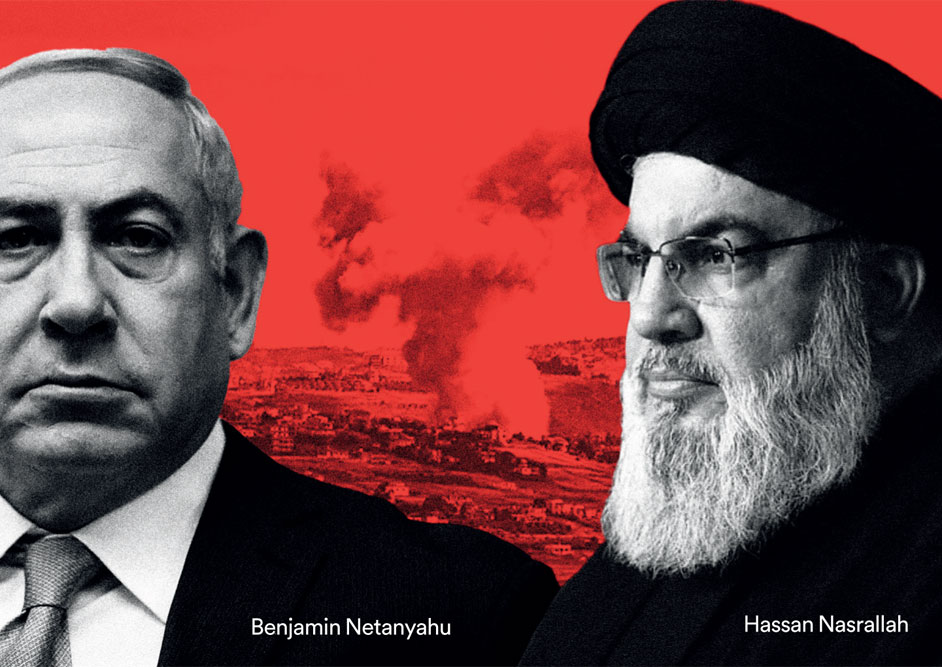Israel announced it launched a preemptive strike on Hezbollah positions in Lebanon in the early hours of Sunday morning, claiming the group was preparing to attack Israel. Shortly afterwards, Hezbollah retaliated by targeting several Israeli military and intelligence positions.
Hezbollah’s Secretary-General, Hassan Nasrallah, stated that the operation was in response to Israel’s previous attacks on Beirut’s southern suburbs and the killing of Hezbollah commander Fuad Shukr at the end of July. The two sides have been engaged in tit-for-tat attacks since October 8, following Israel’s military action against Gaza after Hamas-led assaults on southern Israel. Hezbollah initiated small-scale attacks along the Lebanon-Israel border, asserting that these would cease only when Israel stopped its military operations.
Assessing the Impact on Hezbollah Arsenal
Israel claims to have significantly damaged Hezbollah’s arsenal during its recent strikes. However, the extent of this damage is debated. Hezbollah is estimated to possess between 120,000 and 200,000 rockets and has launched approximately 8,000 at Israeli military targets since October. Israel stated that its attacks destroyed thousands of these rockets, while Hezbollah reported launching around 340 Katyusha rockets aimed at 11 Israeli military bases. Nasrallah dismissed Israel’s claims as exaggerated, suggesting that they were made for political gain. He argued that the lack of significant casualties among Hezbollah forces indicates Israel’s claims might be overstated.
If Israel’s assertions of destroying a large number of rockets are accurate, this could potentially weaken Hezbollah’s military capabilities, limiting its ability to sustain prolonged conflict. However, the evidence for such destruction remains unclear.
The Possibility of All-Out War
Despite the ongoing violence, the conflict between Hezbollah and Israel has not escalated into a full-scale war across Lebanon and Israel. Southern Lebanon has borne the brunt of Israeli attacks since October 8, resulting in the displacement of over 97,000 people and the deaths of at least 566 individuals, including 133 civilians. On Sunday, Israel conducted its largest operation since October, targeting around 30 towns and villages in southern Lebanon.
Hezbollah claims that its attacks were aimed exclusively at military targets, avoiding civilian areas. Israel and its allies had anticipated a retaliatory strike following the assassination of Shukr on July 30. Hezbollah stated that this “first phase” of retaliation was “successfully completed,” but further attacks in the coming weeks remain a possibility, keeping the region on edge.
Motivations Behind Hezbollah’s Actions
Hezbollah has indicated that its recent operation was a direct response to Shukr’s assassination, although some observers suggest it could also be linked to the broader context of Gaza ceasefire negotiations. Nasrallah mentioned that there had been discussions among Hezbollah’s regional allies—part of the Iran-aligned “axis of resistance,” which includes Hamas and the Islamic Resistance in Iraq—about whether to launch a coordinated response or act independently.
One of the key targets in Hezbollah’s attack was the Glilot base near Tel Aviv, where Israel’s Unit 8200 operates. This unit is responsible for Israeli intelligence-gathering and, according to Nasrallah, carries out assassination operations. Israeli officials, however, denied that the base was hit.
Connection to Gaza Ceasefire Talks
The timing of Hezbollah’s attacks coincides with ceasefire negotiations in Cairo aimed at ending the conflict in Gaza. Nasrallah acknowledged that Hezbollah had delayed its response to Shukr’s assassination to give these negotiations a chance. However, there was little optimism about the talks, as Israel insisted on new conditions, including maintaining a presence in the Philadelphi Corridor on the Gaza-Egypt border—a demand strongly opposed by Egypt.
Nasrallah criticized Israeli Prime Minister Benjamin Netanyahu’s new conditions, arguing that they undermined the ceasefire talks and left no reason to delay further military action.
Regional Implications and Future Prospects
Both Israel and Hezbollah have communicated a mutual desire to avoid further escalation, as evidenced by Reuters’ report of indirect communication between the two parties. However, despite this temporary de-escalation, the underlying tensions remain unresolved. The region is likely to experience ongoing low-intensity conflict, with neither side’s operational capacity significantly diminished.
Hezbollah’s ability to execute a sophisticated attack despite Israel’s preemptive measures demonstrates its resilience and strategic capabilities. This suggests that Hezbollah remains well-prepared and capable of coordinating significant military actions, preserving its influence in the broader regional conflict.
Lebanon’s situation remains dire, with many citizens, including Hezbollah supporters, wary of a wider war. Meanwhile, Israel faces economic pressures and public opinion concerns regarding the cost of conflict.
While the recent flare-up appears to have subsided, the underlying tensions remain unresolved. The escalation could reignite a broader conflict, potentially dragging regional powers into the fray.

Leave a Reply